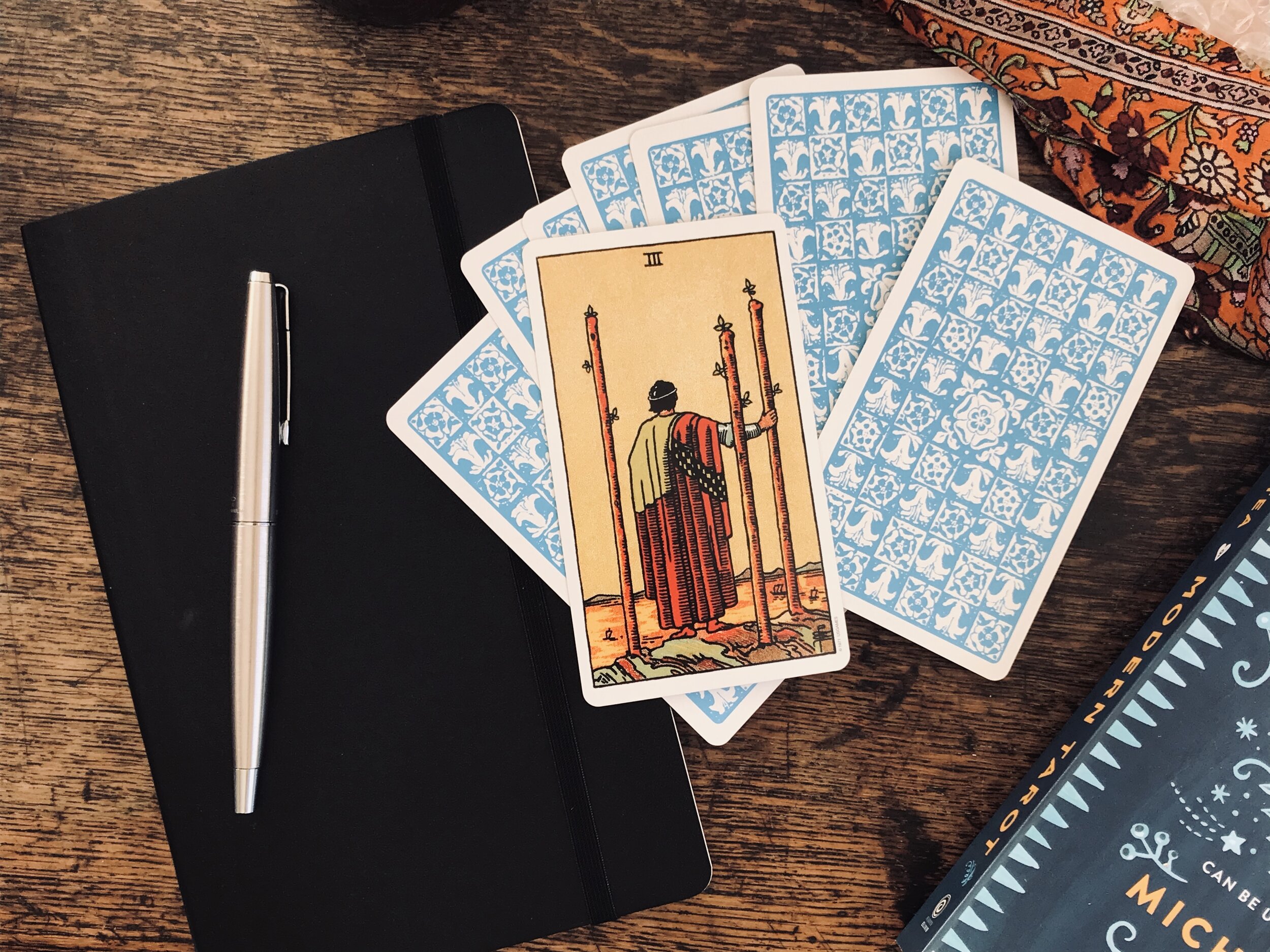Many traditions turn to the natural world for healing. Even within pharmaceuticals, plants have provided a starting point for the development of various medications. After a winter dominated by darkness, it is reassuring to know that there is creativity stirring deep within the belly of the earth promising life to come. As days grow lighter and warmer, blossoms and spring blooms are coaxed out, dressing nature in regal purples and golden-yellow. So, it is worth asking, what other magical properties do flowers possess?
Illustration by Rachael Olga Loyd
Dandelion
Urban legend dictates that plucking this sunny-headed flower will result in wetting your bed. It is not known where this idea originates, but it is interesting that herbalists recommend dandelion for its diuretic purposes and to help with bloating. The name for this ubiquitous weed comes from the French, dent-de-lion – tooth of a lion – so it’s no surprise that it is associated with courage and bravery. It can be used in spells for courage, tenacity and perseverance. Once this bloom dries, you can make a wish and think of loved ones separated by distance while blowing the seeds. Drinking dandelion tea is said to increase psychic powers and the seeds can be used in spells for communication.
Hellebore
This flower may look like rose but is actually related to the buttercup family. Ranging in hues of yellow, green and purple, its folkloric association links it to sorcery as it was believed to be an ingredient of ‘flying ointment’, a hallucinogenic that once rubbed onto a person’s body, would give them the ability to fly. Another use for hellebore is detailed in Burton’s manual of 1628, Anatomie of Madness where he writes:
“Borage and hellebore fill two scenes,
Sovereign plants to purge the veins,
Of melancholy and cheer the heart.”
Passion Flower
This vine plant with showy flowers can be both woody and herbaceous. It is said to be beneficial for anxiety as well as insomnia due to its sedative properties and the belief that is may be responsible for increasing levels of gamma-aninobutyric acid in the brain, which helps to regulate moods.
Borage
Also known as Star Flower , the Celtic name for this flower is ‘borrach’ meaning ‘courage’. This edible blue bloom is therefore associated with courage and psychic ability. Most people will have encountered borage without realising as it is an ingredient of Pimms. Clinical studies show that borage seed oil “reduces cardiovascular reactivity to stress by reducing the systolic blood pressure and heart rate and by increased task performance .” (Haughton 2001)
Lavender
The folkloric associate of this somnambulant flower is that is counteracts the evil-eye. Another folklore links this flower to the plague since it is one of the constituent ingredients of ‘Four Thieves Vinegar’, a brew that was believed to protect people from contracting the disease. One story behind the name of this potion involve four thieves who were caught stealing from the homes of plague victims. They apparently bargained the recipe for the potion in exchange for clemency. Whilst recipes varied, lavender remained present in each, likely for its aromatic properties which mask the less palatable ingredients, like vinegar and garlic. An aromatherapy staple, lavender promotes feelings of relaxation and wellbeing.
Foxglove
Foxglove is said to come from the name ‘folks glove’, a plant beloved by fairy folk. An old myth from the West Country states the when the foxglove bobs in the wind that they are in fact bowing their heads to the fairy folk as they pass by. The Anglo-Saxon word foxes-gleow means ‘a ring of bells’ and associates the bloom with the Norse legends of foxes who wear the flower around their neck, the ringing of the bells making a spell of protection. This plant is highly toxic but is believed to provide your home with protection if planted in your garden.
Lilac
Another heady aromatic flower, lilac is known for protection and is said to drive away evil. Some believe it brings bad luck into the house, however, lilac is a popular ingredient in many perfumes and scented candles similar to jasmine. Lilacs originate from Arabia and come to Europe via spain in the 1500s. Celtic cultures believed that this flower had the ability to transport people to the spirit world.
Yarrow
Yarrow is one of the oldest medicinal plants long been recognised for its healing properties due to its ability to reduce swelling and lower blood pressure. This easily found in parks and hedgerows, is also known as a symbol of protection. Yarrow blossom is also associated with energy, in particular creative energy. Its Latin name millefolium translates to ‘thousand leaves’ and is linked to mythic hero Achilles. Also known as the herb of Venus, hanging dried yarrow about the marital bed was said to ensure that love would last.



